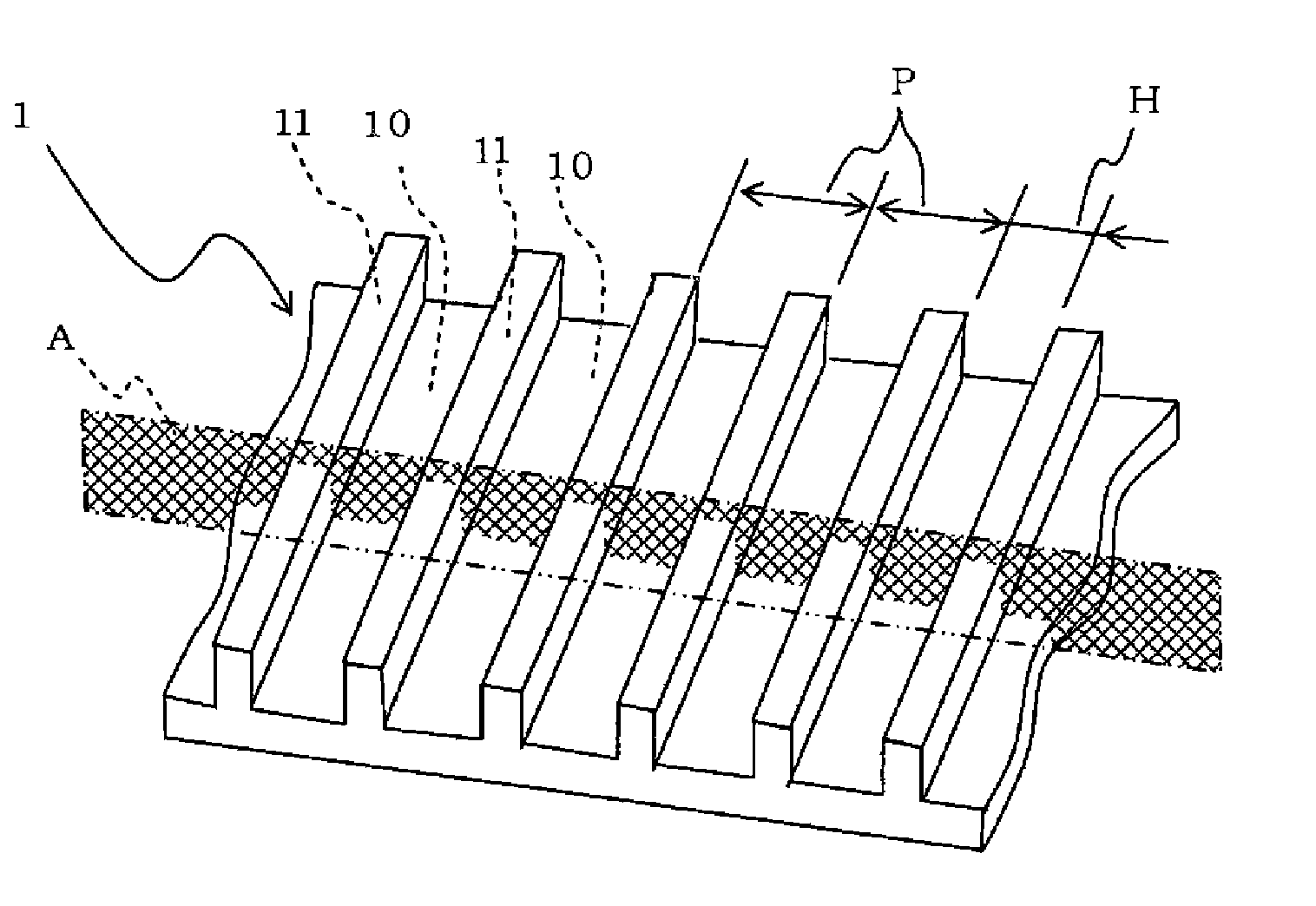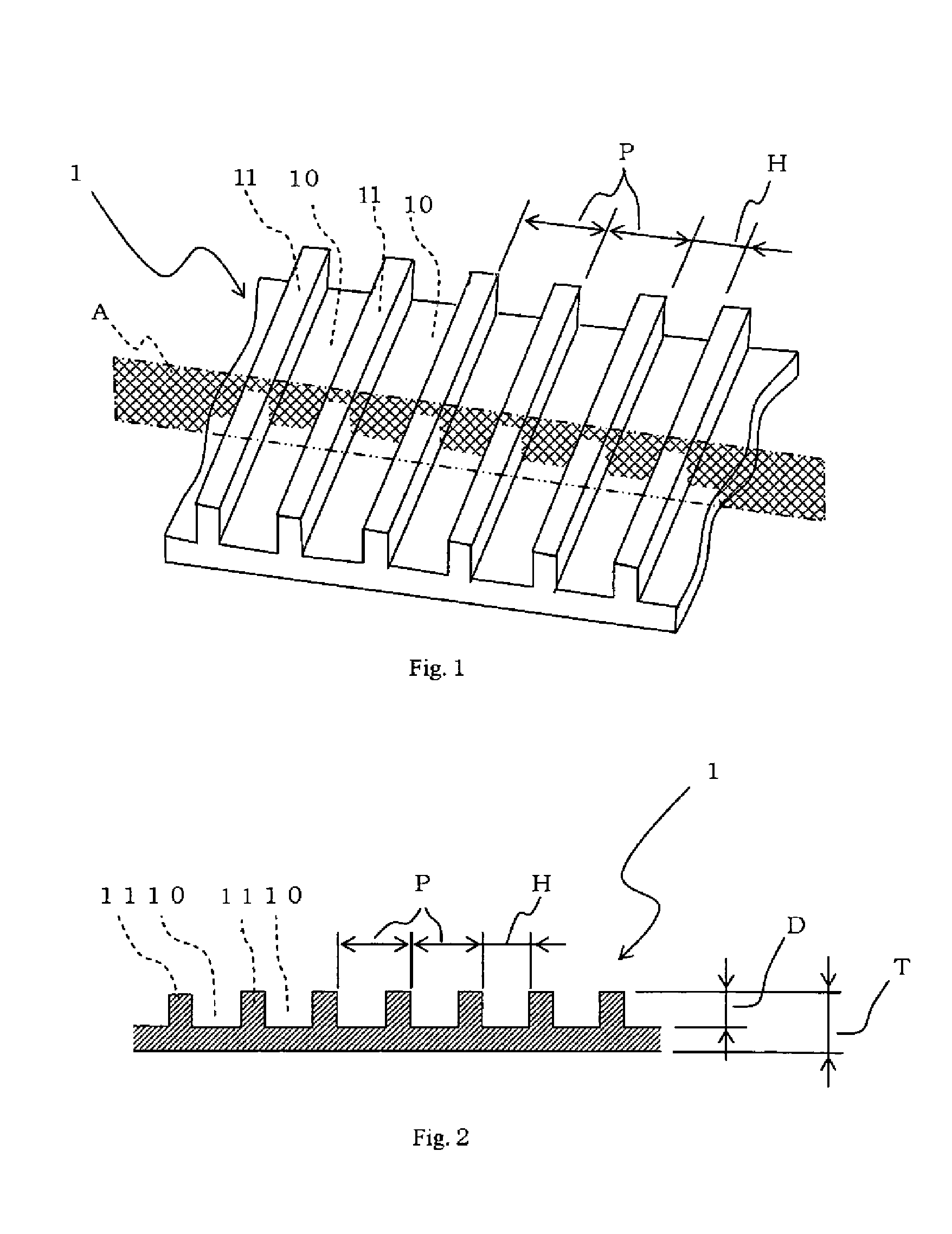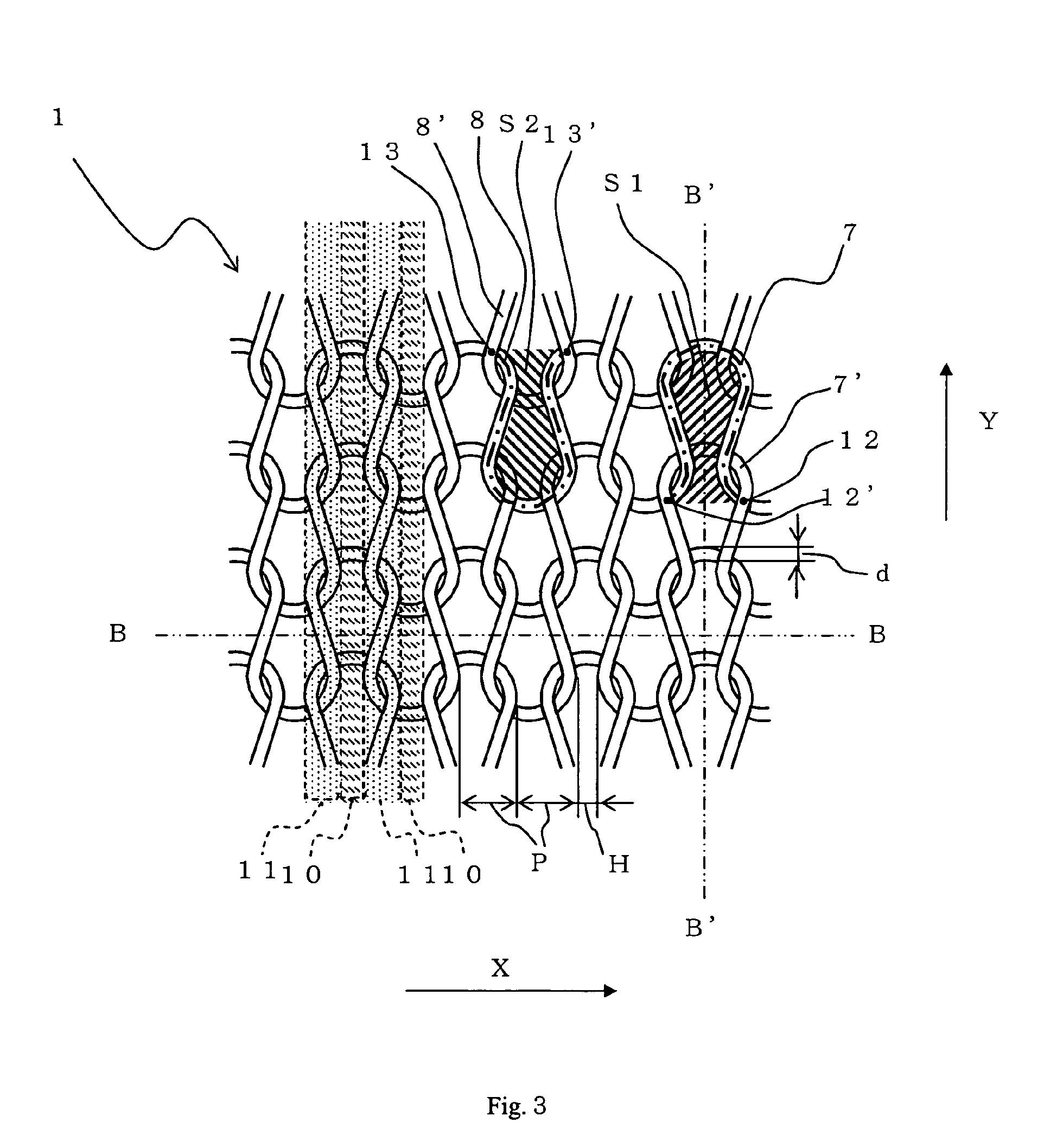Liquid separation device, flow channel material and process for producing the same
a separation device and flow channel technology, applied in separation processes, membranes, knitting, etc., can solve the problems of deteriorating treatment efficiency, reducing the number of units capable of being inserted into the module, and reducing the width of the groove, so as to prevent the function of the separation membrane from deteriorating, the effect of lowering the resistance of the flow channel
- Summary
- Abstract
- Description
- Claims
- Application Information
AI Technical Summary
Benefits of technology
Problems solved by technology
Method used
Image
Examples
example 1
[0057]Measurement techniques and simulation techniques were conducted.
>
[0058]A multi-filament yarn (48 filaments, 110 dtex) that a polyethylene terephthalate filament (melting point: 255° C.) was mixed with a polyethylene terephthalate-type lower melting point filament (melting point: 235° C.) was used as a knitting yarn; a weft knit structure of a plain knitting (gauge (the number of needles per unit length in a knitting machine) 32) was knitted, which was subjected to thermal setting at 245° C., then to calendering, thereby to produce a permeated liquid flow channel material that the groove width was 130 μm, a ratio of the groove width to the pitch of a linear groove was 0.52, the depth of a linear groove was 110 μm, the thickness was 220 μm and a ratio [S1 / (S1+S2)] of needle loop area (S1) to the sum of needle loop area (S1) and sinker loop area (S2) was 0.48.
[0059]When a reverse osmosis module incorporated with this permeated liquid flow channel material was used, the volume of ...
example 2
[0061]Evaluations were conducted by the same simulation technique as in Example 1 except for using a permeated liquid flow channel material that the groove width was 80 μm, a ratio of the groove width to the pitch of a linear groove was 0.50, the depth of a linear groove was 80 μm and the thickness was 170 μm. As a result, the liquidity of permeated liquid was good, and there was no damage in both membrane and permeated liquid flow channel material.
example 3
[0062]Evaluations were conducted by the same simulation technique as in Example 1 except for using a permeated liquid flow channel material that the groove width was 192 μm, a ratio of the groove width to the pitch of a linear groove was 0.90, the depth of a linear groove was 21 μm and the thickness was 50 μm. As a result, the liquidity of permeated liquid was good, and there was no damage in both membrane and permeated liquid flow channel material.
PUM
| Property | Measurement | Unit |
|---|---|---|
| width | aaaaa | aaaaa |
| outer diameter | aaaaa | aaaaa |
| depth | aaaaa | aaaaa |
Abstract
Description
Claims
Application Information
 Login to View More
Login to View More - R&D
- Intellectual Property
- Life Sciences
- Materials
- Tech Scout
- Unparalleled Data Quality
- Higher Quality Content
- 60% Fewer Hallucinations
Browse by: Latest US Patents, China's latest patents, Technical Efficacy Thesaurus, Application Domain, Technology Topic, Popular Technical Reports.
© 2025 PatSnap. All rights reserved.Legal|Privacy policy|Modern Slavery Act Transparency Statement|Sitemap|About US| Contact US: help@patsnap.com



